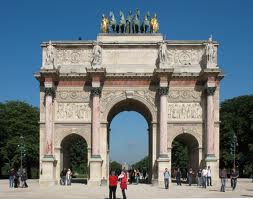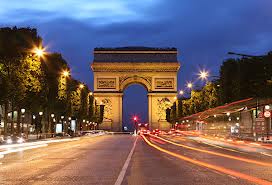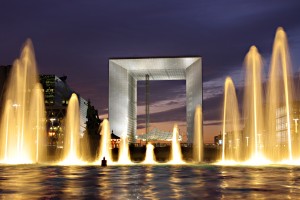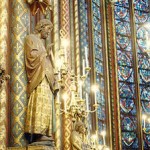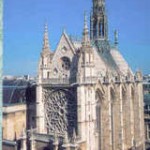Montmartre – the artists’ corner
Montmartre, one of Paris’ favorite neighborhoods, has a long and fascinating history. Before the Romans, the hilly area was originally known as Mons Martis (mount of Mars). However, around 250AD, Saint Denis, the bishop of Paris, was tortured and then beheaded by the Romans on the hill for bringing Christianity to the region. Legend has it that instead of dying, Saint Denis picked up his head and started walking, finally dying 4 kms further on the spot that is now the Basilica Saint Denis. From then on, the name of the area became Montmartre, or Mount of the Martyr.
Because of the dominating view overlooking the city of Paris, Montmartre has been a strategic point during France’s long war history. Russians occupied Montmartre during the Battle of Paris in 1814 and took advantage of Montmartre’s location to shower the city with artillery fire; the tragic battle of the Paris Commune took place on the Butte Montmartre in 1871, killing several thousand civilians.
Montmartre became known as a carefree, creative section of town as artists and singers began to migrate there during the Belle Epoque era, 1870-1914. A popular entertainment destination with establishments such as the Moulin Rouge and the Lapin Agile, it attracted party goers, free thinkers, tourists and vacationers. In 1871, an enormous cathedral was built in part to honor the victims of the Paris Commune; its large white domes dominate the skyline all over Paris.
The Moulin Rouge
 Easily recognized by its red windmill roof, the Moulin Rouge was opened in 1889 during the height of the Belle Époque. It quickly became popular as the fashionable and well-to-do Parisians could come to the Moulin Rouge and rub shoulders with all levels of society. That atmosphere was fostered by the architecture of the building, considered revolutionary for its time. There was a garden with a gigantic elephant allowing for people of all walks of life to mix and mingle, and backstage it was easy to change sets quickly. Many French stars began their careers at the Moulin, such as Mistinguett, Jane Avril, Yves Montand, Edith Piaf, etc.
Easily recognized by its red windmill roof, the Moulin Rouge was opened in 1889 during the height of the Belle Époque. It quickly became popular as the fashionable and well-to-do Parisians could come to the Moulin Rouge and rub shoulders with all levels of society. That atmosphere was fostered by the architecture of the building, considered revolutionary for its time. There was a garden with a gigantic elephant allowing for people of all walks of life to mix and mingle, and backstage it was easy to change sets quickly. Many French stars began their careers at the Moulin, such as Mistinguett, Jane Avril, Yves Montand, Edith Piaf, etc.
The Moulin Rouge is associated with the cancan, a dance that became all the rage; the dancers were loud and rowdy. They performed with abandon, using provocative movements showing their underwear and body parts that were normally kept under the skirts.
The Moulin Rouge has been celebrated in print and film. The latest film was Moulin Rouge directed by
Baz Luhrmann and starred Nicole Kidman and Ewan McGregor. Other films include the 1952 Moulin Rouge, directed by John Huston, Une Nuit au Moulin Rouge (1957), and La Chaste Suzanne (1963). Books that feature the red windmill include Jean Avril of the Moulin Rouge (1954), Flipbook Moulin Rouge Paris France 23h18 (2003) and Le Pétomane 1857-1945 (1967).
Today, the Moulin Rouge is as popular as ever, with tourists and regulars alike attending one of the 3 evening shows or the luncheon show at 1 pm. Prices for the dinner show at 7 pm vary from $246/person to $288/person according to the menu chosen; there is now a vegan option! There are also shows at 9 pm and 11 pm that have better prices.
So, when in Paris, come kick up your heels at the Moulin Rouge!


